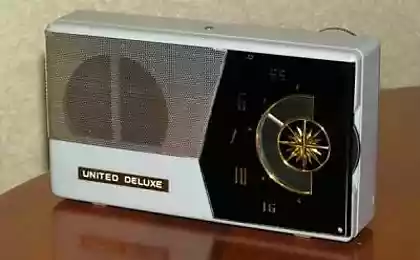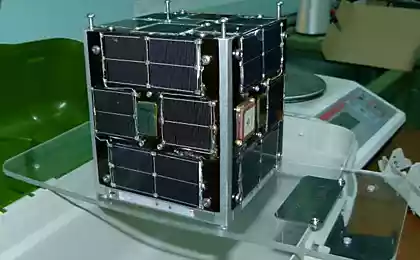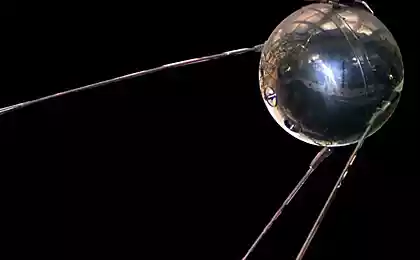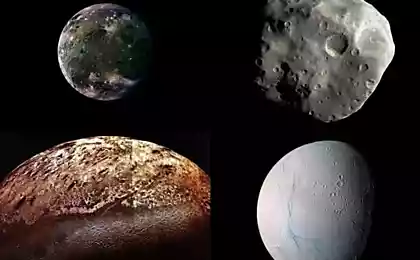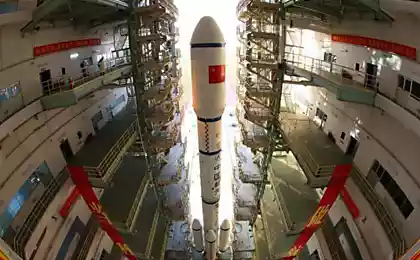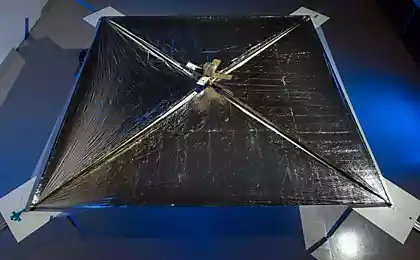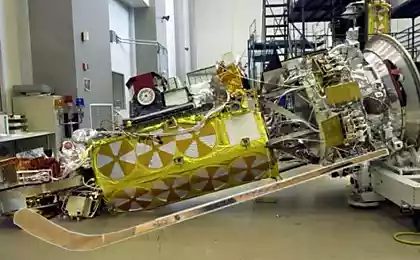Satellite - it is very easy
In these weeks, you can watch the traditional events on Sputnik - beginning of the space era. Force satellite event, which should be the first to third. A first flew a different unit.
This text is about how just now hear satellites orbiting the Earth and how it was at the beginning of the space age. Paraphrasing a famous book once E. Berg: Satellite - it's easy!
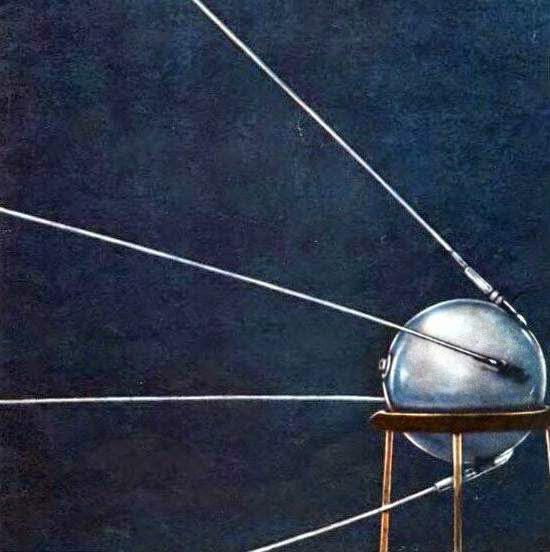
Over the last 5-10 years cosmos became closer to the layman as ever. The advent of SDR, and then dongles RTL-SDR discovered the easy way to the world of radio people that this has never sought.
Why is it necessary?
Remarque about radio amateurs and first satellite If the West Sputnik was a big surprise, then, at least, the Soviet hams were warned a few months before the event.
Looking at page of the magazine "Radio» , can summer 1957 to find articles like the artificial satellite, launch is expected in the near future, and the scheme of equipment for receiving satellite signals.
Excitement caused by the satellite was unexpected, and had a strong influence on these "not scientific" aspects of society, such as fashion, design, cars, etc.
The Kettering Group of amateur satellites trackers became famous in 1966 discovered a Soviet cosmodrome in Plesetsk. Observer Group originated in Kettering Grammar School (UK) and was originally a teacher via radio satellites showed the Doppler effect in physics lessons. In subsequent years, the group brought together amateurs, professionals from different countries. One of its active participants - Sven Gran, who has worked all his life in the Swedish aerospace (Swedish Space Corporation).
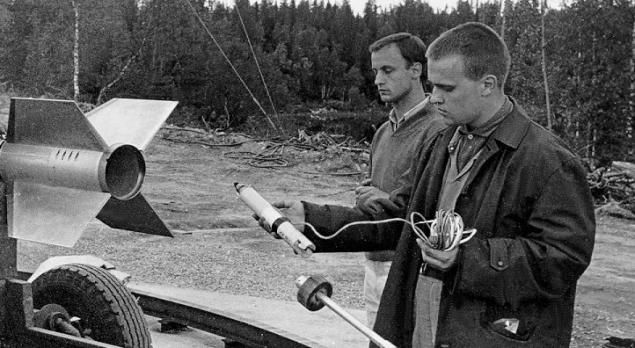
On his website, he has published articles on the history of early space exploration, record made in the 1960-1980's. Interesting to listen to the voices of Soviet cosmonauts during everyday communications. Site recommended to study the history of space exploration enthusiasts.
Curiosity. Although the "all you can find on the Internet", few think that since the beginning of this "everything" someone posted on the Internet. Someone wrote stories, someone makes an interesting photo, and then it diverges on the network of retweets and repost.
You can still listen to the talks of astronauts, who are particularly active at the time of arrival / departure of the crew to the ISS. Some people managed to catch the talks during spacewalks. Not all shows NASA TV, especially because of Russia for NASA - a blind flight zone, and even fly TDRS not sufficient. Out of curiosity, you can take the weather satellites NOAA ( example methodology ) and Meteor (images have better resolution пример ) and learn a bit more information than is published in the media.
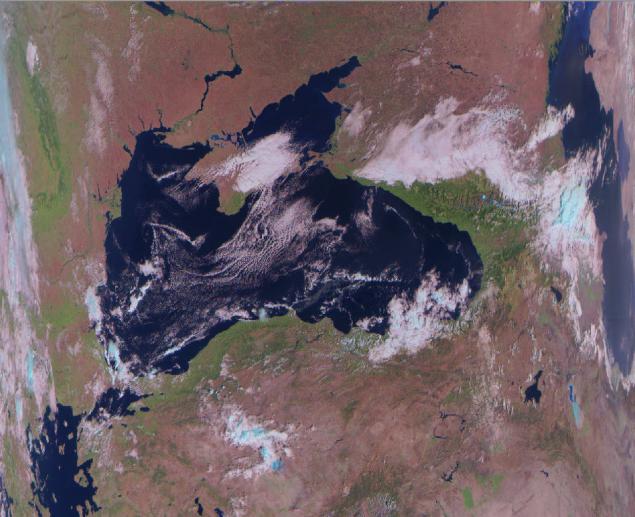
You can learn first hand how "faring" multitude cubesat.
Some have a program for receiving and decoding telemetry, other telegraph explicitly. Examples can be found here .
You can watch the performance of launch vehicles and upper stages in the derivation of the cargo into the desired orbit. The same equipment can be used for tracking stratospheric balloon. Here , for example, an amazing event for me - ball flew from Britain July 12 and at an altitude of 12 kilometers has already made a couple of world tours, flew to the North Pole. Recently been seen over Siberia. Very few receiving stations participating in the project.
Actually, you need to receive? H4> 1. The receiver operates in the desired range. In most cases, RTL-SDR corresponds sufficient requirements. recommended preamplifier, a notch filter. It is recommended to use a USB extension cable with the ferrite filter - this will reduce the noise from the computer and will place the receiver closer to the antenna. Good result gives экранирование Receiver .
2. The antenna on the selected range. "Best amplifier - a dish." Whatever preamp would not be installed after the antenna, but the bad antenna will amplify only the noise and not the desired signal.
3. In the case of satellite signal reception need to know that flies, where and when. This requires a program of satellite tracking, pointing and predicts the position of the satellite at a certain point.
4. Program for receiving and decoding telemetry cubesat or meteorological satellites.
A feature of the signal reception from satellites is the distance and the Doppler effect.
Upon reception of the theory is well written in this document on page 49 -
Satellite communication Construction of a remotely operated satellite ground station for low earth orbit communication .
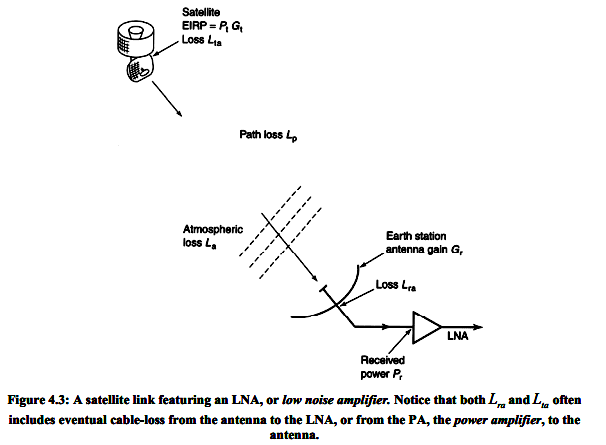
The formula [Eq. 4.10] shows that the power received by the receiver, directly depends on the characteristics of the emitting and receiving antennas and inversely proportional to the square of the distance between the transmitter and receiver at the same wavelength. The longer the wavelength, the less radiation is scattered ("Why is the sky blue?»).
Flying overhead satellite is at a distance of several hundred kilometers, and flying on your horizon review may be at a couple of thousand kilometers. What is natural to reduce the level of orders received signal.
A transmitter power is not high, the chances of successful reception is not great. For example, FunCube-1 transmitter power at the illuminated side of 300 mW, and in the shadow of only 30 mW.
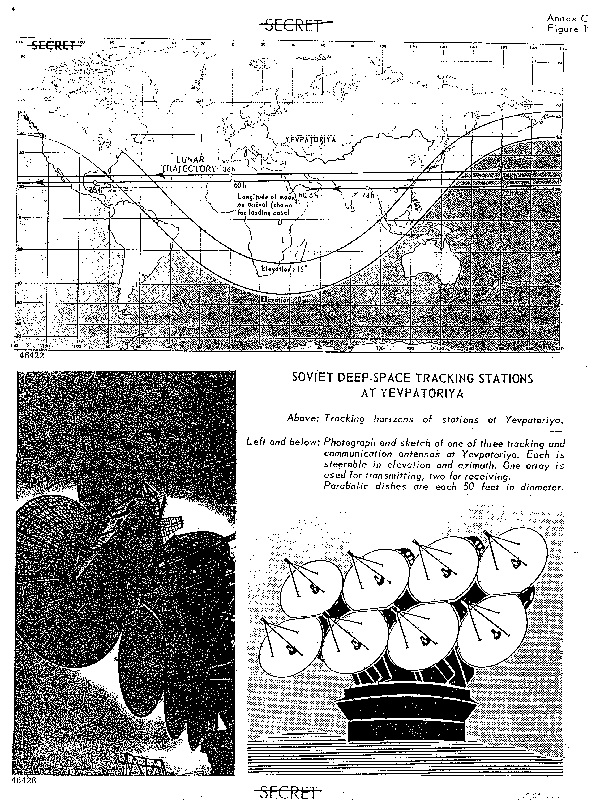
What needs antenna, and at what range? H4> First of all, it depends on the place of reception and reception facilities. If this polar orbiting satellites, then sooner or later he will fly over the receiving station. This meteorological satellites, many cubesat. If it is, for example, the ISS, and the receiving station is located in Moscow, the ISS will fly only on the horizon. And to make the connection, or long to hear the satellite antenna must be highly efficient. It is therefore necessary to decide - what is available in the flying distance from the place of reception.
What programs exist for satellite tracking, pointing and predict the position of the satellite at some point? H4> Online tools:
- www.satview.org
- www.n2yo.com/
Of the programs for Windows: classic Orbitron ( program review ) and, for example, Gpredict .
Last shows information on the frequency of satellites. There are programs for other platforms, such as Android.
We will use Orbitron and frequency information from third party sources.
How to calculate the orbits of the satellites of the program? H4> Fortunately the necessary data to calculate the orbits ( TLE set of orbital elements for satellite ) is freely available online and are available here . You do not even have to think about it - the program automatically download fresh data about the orbits of space objects.
But it was not always North American Aerospace Defense Command (NORAD) is a catalog of space objects and in fact publicly available directory is not complete - there are no US military satellites. Catching such objects engaged group of enthusiastic amateurs. Sometimes they manage to find out in the open database object.
Identifying and orbit prediction came before launching satellites. In the USSR, to the solution of this problem was to include a wide range of observers and instruments. In the observation and measurement of the satellite orbit, except regular trajectory measurement stations were involved Observatory and the department of higher education institutions, and selected easily accessible amateur bands will involve the observation of the first satellite radio amateurs army - in the magazine Radio 1957 can be found radiopelengatsionnoy circuit installation, tape recording with which the radio amateur had to send to the Academy of Sciences of the USSR. For unusual work on the first stage were attracted direction finders of the "Circle» , belonging entirely to another agency.
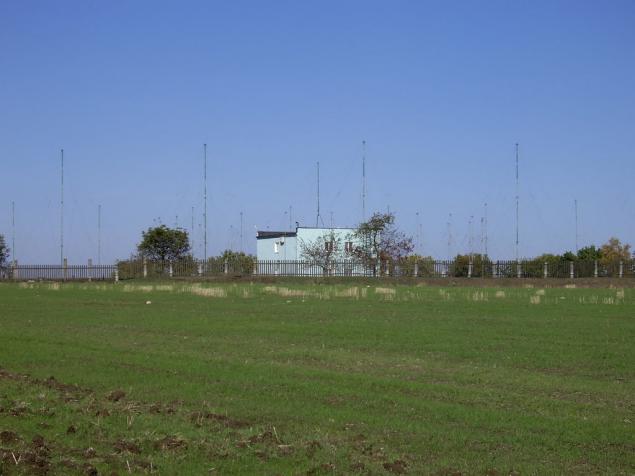
Soon the great success achieved ballistics NII-4. They have developed a computer program "Strela-2" for the first time allowed to define the parameters of the orbit is not according to information from the DF, and the results of the trajectory measurements obtained stations "Binoculars-D" on the Nipah. Now it is possible to predict the movement of the satellites in orbit.
Stations of the trajectory measurements of the first generation "Irtysh" were gradually replaced by the new stations "Kama" and "Vistula" with much higher technical performance in range, accuracy, and reliability. In 1980 there were laser ranging. Read more details here .
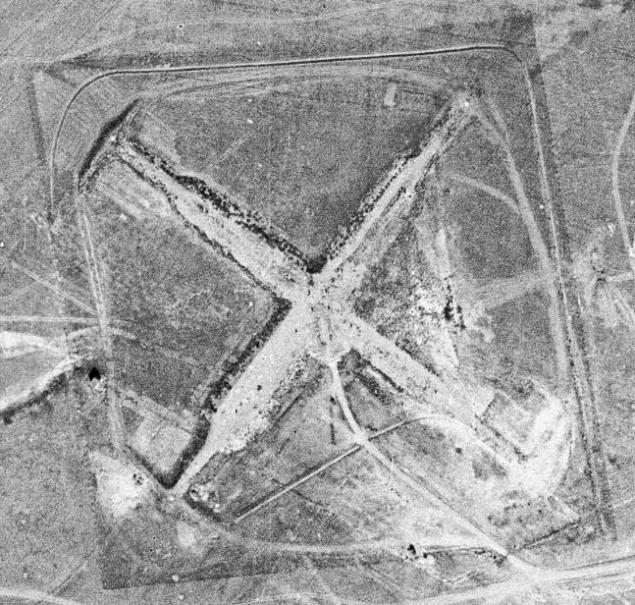
Station measures the orbit is not only "their", but also loved the probable enemy satellites. Very fast in-orbit satellites appeared and then the optical signals intelligence. The fact that they could see in the distant 1965 will be lower. In the meantime, remember the anecdotal story about soldiers far northern part is probably the only entertainment that has been compliance with the rules of radio and "optical" disguise at the time of flight of the respective satellites. One day before the flight of the American satellite optical reconnaissance they naturally for fun, used the slag from the boiler room to write the words on the huge snow.
If you are 18 + idea alive, alive and will live

But what about the fans hunt for companions? They had to listen to the air, stare at the sky after getting the news about the launch of a rocket from the Baikonur. Usually a few turns after the launch were predictable.

The photo cards 2000 contains a set of orbits for satellites received Sven verge of NASA in the period 1977-1990. Then they could get a dial-up access, and then, after a few years, the Internet. Sven has scanned these cards to the thematic group on Facebook as they contain a set of elements that are missing in the database Spacetrack.org.
These data were used to predict the turns, which is possible to observe space objects.
Naturally no computers - just like these two stencil used 25 years ago. And by the time the TLE data were not fresh.

Later to calculate the orbits of Sven used handwritten program for the PC.
During the flight of Sputnik CIC has not yet had its own computer center, and a dedicated computer time on a computer other organizations do not have enough for all the calculations, and the satellite orbit fairly accurately predicted specially made stencils.

So, we can see the window Orbitron satellites from the open base, they are categorized geostationary, Ham radio, weather, etc. ISS Not all of them are of interest for the reception, some do not work and are of interest only for the photographers of the night sky.
Working frequency satellites can be found here:
On Russian ; На English .
A here their set of orbital elements (TLE), the same instructions how to set up automatic updating of TLE in the Orbitron. In some cases the need omni-directional antenna, in other Highly-and, in the third - more convenient to use dvudiapazonnoy. Narrowly focused, require manual of reference for arbitrary satellite or positioner.
see what "professionals use» .
Helical antenna 922 MHz - for reception of ships Progress, Soyuz TMA, and 1020 MHz - boosters Briz-M. The antenna is fixed in the same direction as the south Swedish ships are visible low on the horizon and there is no need to twist it. Above - discone-antenna 100-480 MHz - universal application. Horizontal directivity pattern. But when receiving meteorological polar satellites, flying in the zenith, there will be problems. Therefore, for such cases it is better to use kvadrifilyarnuyu antenna at the desired range.
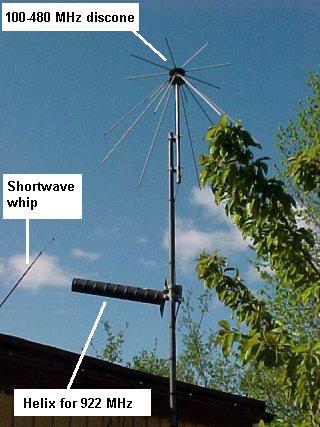
Antenna "Yagi" - former television antennas, also directed and fixed in one direction.

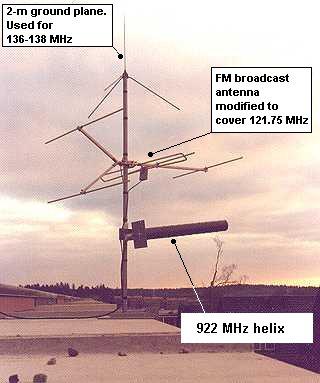
Antenna "Yagi" 920 MHz designed for mobile phones. Sven Gran.
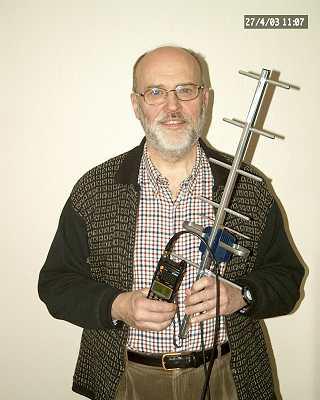
If no suitable factory / TV antenna, it is possible to make something simple.
Easy Dual Band (70 cm and 2 m) antenna:
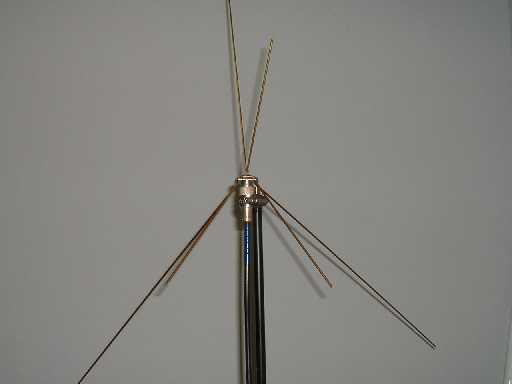
simplest version kvadrifilyarnoy antenna for weather satellites.
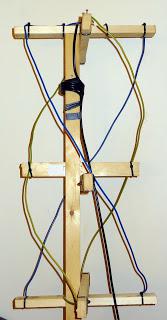
More thorough version:
Manufacturing instructions antenna at 137 MHz for the signal reception of weather satellites. Kvadrofilyarnaya antenna (Quadrifilar Helix) .
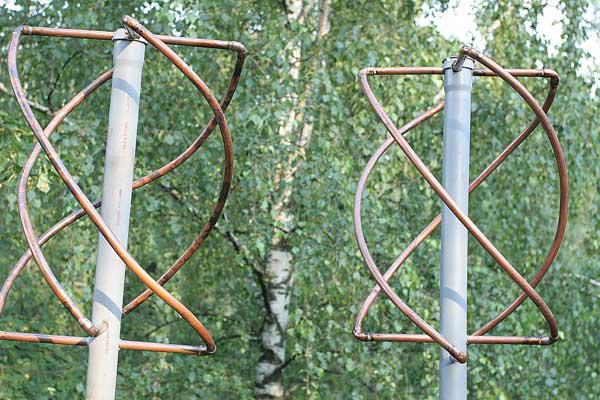
Whatever antenna was not a common condition - away from obstacles and higher from the ground. The more open horizon, the more last session. And do not forget that in the case of a directional antenna it must be "direct" in the direction of the satellite.
Very big remark about Soviet Deep Space Network antennas The development of the family of missiles R-7 was faster than satellites, in part because the "good" companions were given when the R-7 has already passed the stage of flight tests. The early establishment of the third, fourth stages allowed to reach escape velocity and carry rocket flight to the planets, the moon, circled the Moon and return to Earth and hit the moon. Time to design something from scratch or not, use ready devices and components. For example station antenna installation "Dawn" to communicate with the first manned spacecraft was a four-helix mounted on the basis of searchlight installation, remaining after the war.
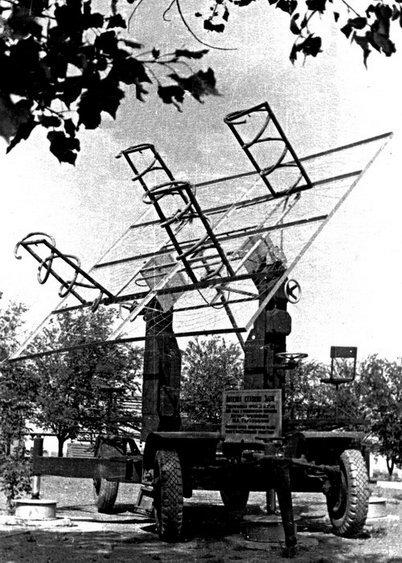
Under time pressure for the Deep Space Network antennas were used ones that were already in the right place and the right characteristics. More details about the temporary center of space communication can be read here .
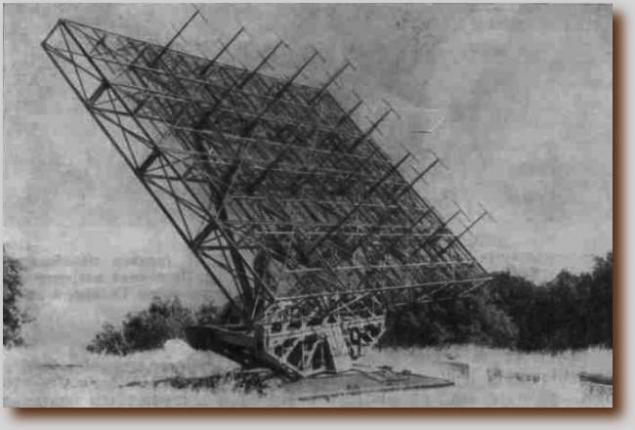
Simultaneously with the launch to the Moon "near" is to build two capital Deep Space Centre with the largest in the world at the time, space communications antennas (by the way Deep Space Centre call them journalists, the real names of other well - NPC and NPC-10 -16, but this, for some reason, is not quite correct names.).
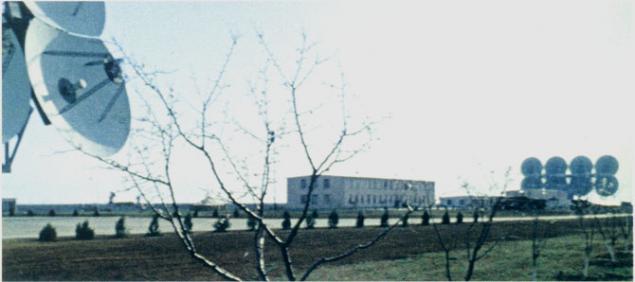
Built from the same set of "finished units" and therefore erected in record time. Using gun rotary devices like antenna base caused the CIA slight confusion and some time they thought it was being built coastal battery. Two years later, there was a curiosity associated with the Soviet experiment on complex "Pluto" to clarify the meaning of the astronomical unit by Venus radar. Probably the officials in the Soviet Union decided that greatly improved value of the astronomical unit is a state secret, and distorted the published results of the experiment. Over a clumsy attempt to hide the value laugh astronomers :
we should congratulate our Russian colleagues on the discovery of a new planet. It surely was not Venus! Blockquote> Antenna, play an important role in the study of neighboring planets in 1960-1970h, was cut on the metal Ukraine in November 2013th.
More to read about NPC-16
quote Boris Chertok :
Hidden Text According to preliminary calculations for reliable communication with the spacecraft inside the solar system, in the world we must build a parabolic antenna with a diameter of about 100 meters. The cycle of creation of such unique structures estimated optimistic in five or six years. And before the first launches on Mars available antenschikov was less than a year! By that time it was built parabolic antenna Simferopol NPC-10. This antenna with a diameter of 32 meters was erected for future lunar programs. It was hoped that it will begin operation in 1962.
Ie
href="http://marine.rutgers.edu/~lojanen/tscan4/html/trackmon/trackmon_examples.html">выгодный
.
- Of course.
Good day.
All right!










